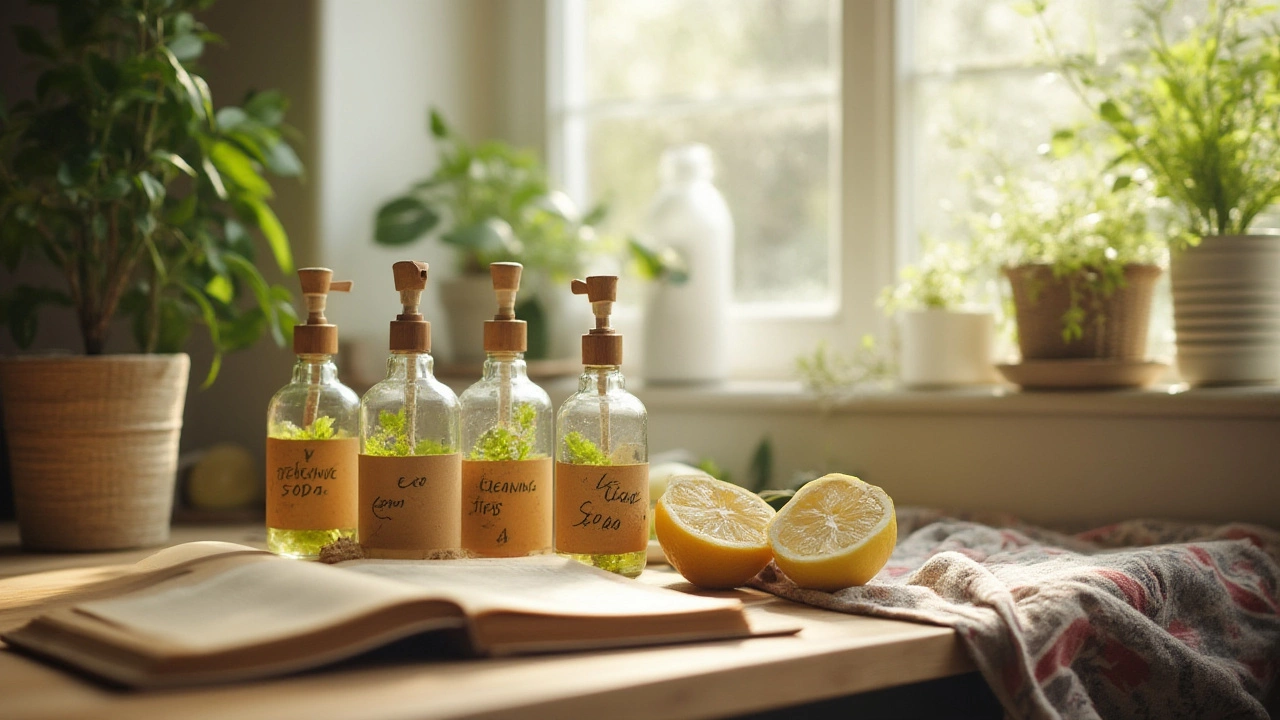Eco Cleaning Products: What They Are and How to Use Them
Running a spotless home doesn’t have to mean loading the bin with harsh chemicals. Eco cleaning products are made from natural ingredients that break down safely, leave less residue, and keep the planet happy. Below you’ll find quick facts, a shortlist of the best green cleaners, and DIY ideas you can start today.
Why Choose Eco Cleaning Products?
First off, they protect your health. Traditional cleaners often contain ammonia, bleach, or synthetic fragrances that can irritate skin, eyes, and lungs. Switching to a plant‑based formula means fewer allergens and a lower risk of accidental poisoning for kids and pets.
Second, they cut down on waste. Many eco brands use refill stations, biodegradable packaging, or recyclable bottles. Every refill saves a few plastic pieces from ending up in landfill.
Lastly, they’re usually effective. Ingredients like vinegar, citric acid, baking soda, and essential oils cut grease, dissolve grime, and neutralize odors just as well as commercial chemicals—sometimes even better, especially on stubborn mineral deposits.
Top Eco Cleaning Products for Your Home
All‑Purpose Cleaner: Look for a spray that blends distilled water, white vinegar, and a few drops of lemon essential oil. It tackles countertops, tiles, and cabinet fronts without leaving a film.
Glass & Window Cleaner: A mix of 1 part vinegar to 3 parts water, plus a splash of alcohol, works wonders on glass. Spray, wipe with a microfiber cloth, and you’ll get streak‑free shine.
Bathroom Scrub: Baking soda plus a little castile soap creates a gentle abrasive paste. Apply to showers, tubs, and tiles, let sit for a few minutes, then scrub and rinse.
Laundry Detergent: Brands offering plant‑based pods or powder avoid phosphates and synthetic dyes. If you prefer DIY, combine washing soda, borax, and grated soap flakes for a low‑cost, low‑impact solution.
Floor Cleaner: A bucket of hot water with a splash of vinegar works on tile and linoleum. For wood floors, use a tiny amount of eco‑friendly oil‑based cleaner designed for polished surfaces.
All these options are easy to find in UK supermarkets, garden centres, or online eco‑shops. Check the label for certifications like “EU Ecolabel” or “Cradle to Cradle” to ensure genuine sustainability.
Want to stretch your budget? Many eco brands sell refill packs that you pour into a reusable bottle. The cost per litre drops dramatically, and you avoid extra plastic.
When you’re unsure about a product, read the ingredient list. If you see terms like “sodium laureth sulfate,” “phthalates,” or “parabens,” it’s a sign the formula is not fully green.
Finally, remember that proper storage keeps your cleaners effective longer. Keep them in a cool, dry place away from direct sunlight, and label DIY bottles with the date you made them.
Switching to eco cleaning products is a small habit change that adds up. Your home feels fresher, your health stays safer, and you play a part in reducing harmful chemicals heading into waterways. Give one of these green cleaners a try this week—you’ll see the difference without any complicated steps.

What Makes a Cleaner Truly Environmentally Friendly? Key Ingredients and Real-World Impact
Discover what defines an environmentally friendly cleaner, why ingredients matter, and how to select green cleaning products. Practical tips, facts, and science explained.
Read More